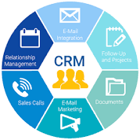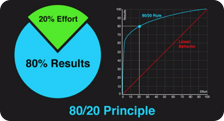The world finds itself in a place that modern civilization hasn’t seen before (well we call ourselves modern and civilized) with business uncertainties, questionable news information, and a hyper political atmosphere that makes conducting business tiring and treacherous.
With the passing of time and increasing competition, an organization, however established it may be, needs to change and or must move forward. For an employee, a change could mean different work culture, obsolete technical knowledge, or changing management techniques. Because of such reasons change is not a welcome alternative for many; such cases should be handled with utmost care and careful communication only. To complicate mater even more remote work puts a twist on the so-called working environment that many are still not use to.
The role of communication in the success of any business function is a well-documented fact. Its efficacy is ushering change is also evident from the fact that often organizations choose people with better communication skills to lead a change initiative, with the hope that they will able to gain widespread support across the organization.
Before we look into the virtues of communication, let’s look closer at the process of change management. Managing change is essentially and a methodical approach used for a proper and effective transition of individuals, teams, and organizations from a current undesired state to a desired state in the future. Essentially change management comprises of both, organizational change management as well as individual change management process and if these practices are effectively used, they can lead to a better more efficient and profitable organization.
Generally, employees go through three phases before successful implementation of a change is done:
To effectively communicate a change, some general guidelines should be followed:
A key to success is also to listen to those around you and taking to hart what they have to offer. I was recently asked to provide a solution to a messaging issue by providing three talking points. I provided the talking points with the messaging to go along, but at the end of the day no messaging was ever sent out with no reasoning or explanation. Follow through and closure is extremely important and valuable.
Change management process with efficient and sincere communications can help circumvent all the commotion and make executing changes a quick and hassle-free process.
Allawos & Company has helped countless individuals and companies alike reach their goals and discover new potential.
















